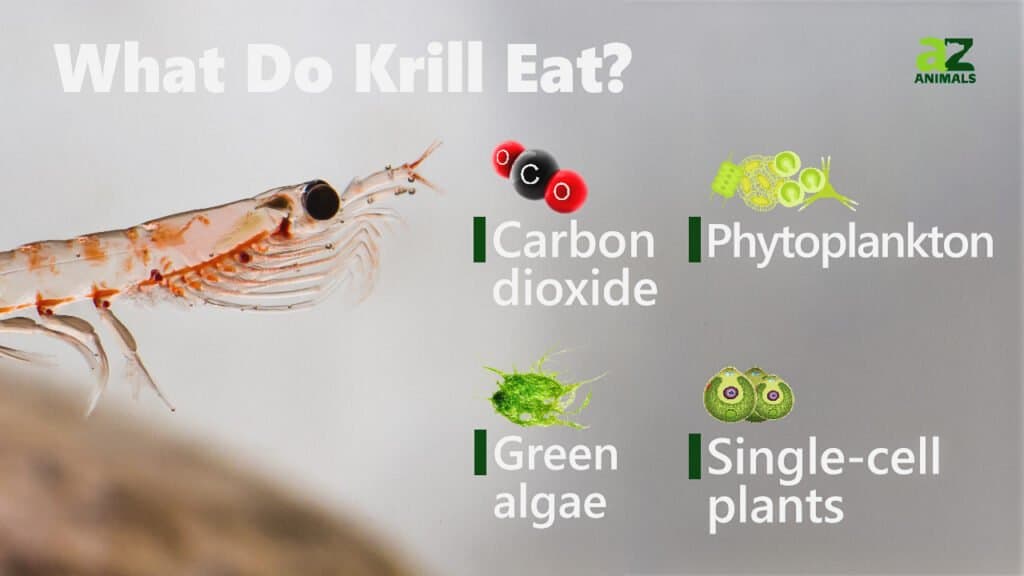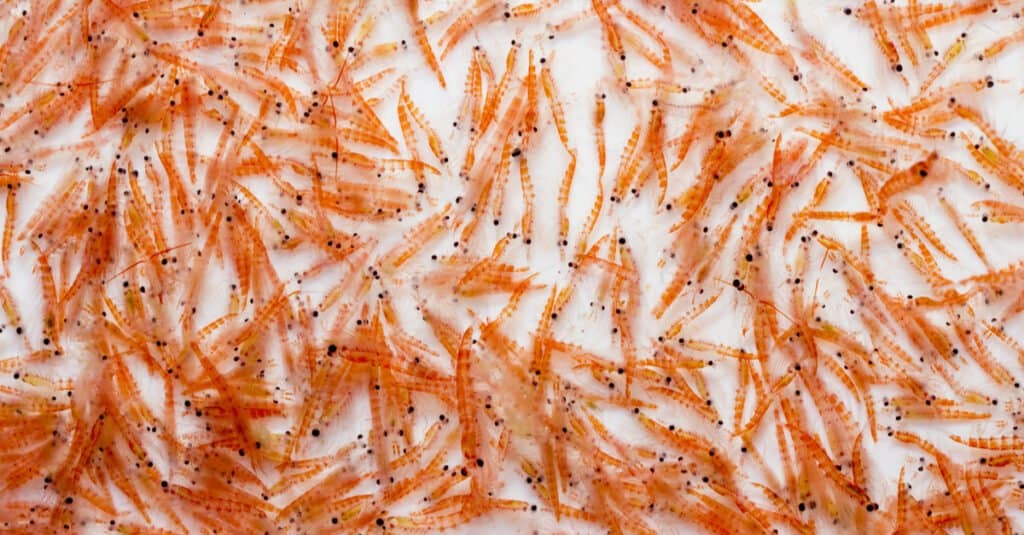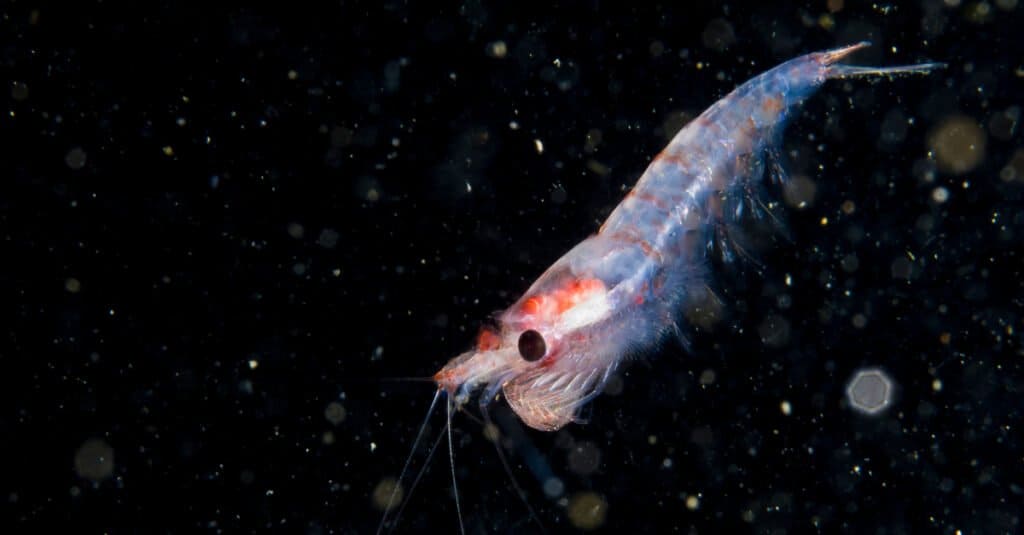Krill are ocean-dwelling crustaceans highly sought as food by sea predators. The main krill species live in the Southern Ocean (Antarctic Ocean) and might spend more time trying not to become food for other animals than they spend feeding themselves. So what do krill eat when not hiding from blue whales, penguins, and seals? Lots of phytoplankton and algae floating at the water’s surface.
Let’s dive deeper into what krill eat, the unique way they eat, and how their diet influences the lives of other animals.
What Do Krill Eat?

Krill eat a diet of algae, fish larvae, phytoplankton, and zooplankton. Krill are omnivores, though most krill species eat phytoplankt as their primary food source.
The krill – which looks a bit like a prawn and can glow in the dark – is particularly fond of eating a type of phytoplankton called a diatom. These living microalgae are in plentiful supply in oceans and other bodies of water across the world. Diatoms compose such a large part of the earth’s biomass; they produce anywhere from 20 to 50 percent of Earth’s total oxygen. So to say diatom is valuable to krill and the planet is a huge understatement!
Here’s a list of common foods krill eat:
- Algae
- Copepods
- Fish larvae
- Phytoplankton
- Zooplankton
Here’s a list of some of the specific species krill eat:
- Ciliates (zooplankton)
- Cryptophytes (phytoplankton)
- Diatoms (phytoplankton)
- Dinoflagellates (algae)
- Prasinophytes (algae)
- Prymnesiophytes (phytoplankton)
- Turbellaria (flatworms)
How Do Krill Eat?

Krill are filter feeders like much larger animals which sometimes consume them!
©I. Noyan Yilmaz/Shutterstock.com
Similar to that of manta rays and whale sharks, most krill are filter feeders. Krill bodies have comb-like “legs” called thoracopods. Their front thoracopods flutter and clasp together to form a basket shape for catching food. As they swim, they catch food in the “basket” as water is filtered out through their fluttering appendages. Then, when they’re ready to eat, krill use their bristle-lined thoracopods to pull the captured food into their mouths.
This filter-feeding system makes it possible for krill – tiny crustaceans only 1-2 inches long – to harvest microscopic single-cell algae.
During the day, krill spend much of their time hiding from predators near the ocean floor. Nighttime is when they swim to the surface to catch phytoplankton and other food. They often eat algae that live on the bottom of floating sea ice.
How Much Do Krill Eat?

©RLS Photo/Shutterstock.com
According to a 1984 study published in The Journal of Crustacean Biology, a typical krill weighs about 120 micrograms (when dry) and eats “a maximum of 10% of its body carbon per day.” So that means that this 2-inch sea creature eats very little compared to other ocean animals. However, there are millions of krill feeding on phytoplankton at a time.
Did you know that a krill can live up to 200 days without eating? It’s true! If krill are unable to reach or find food, which is often the case during cold winters, their bodies (excluding their eyes) shrink until they eat again. This starvation phase is referred to as a juvenile stage where krill even shed their sex organs.
Krill do risk starvation during winter months in antarctic waters when the ocean’s surface holds more ice, making phytoplankton scarce.
Who Competes With Krill for Food?
The Southern Ocean is home to 5 different krill species that comprise ocean biomass of over 500 million tons! So it’s safe to say that the creatures competing for krill food are usually their own countless krill relatives.
Krill also share their love of ocean phytoplankton with other tiny creatures like aquatic insects and skeleton shrimp.
How Does Their Diet Impact Other Species?

Krill are essential to some of the largest animals in the world like blue whales.
©Krill666.jpg: Uwe Kils / Creative Commons – Original / License
A krill eats a lot of plankton and ocean animals eat a lot of krill. If you remove krill and their eating habits from the equation, the ecosystem of the entire ocean could tip quickly toward doom.
For example, if krill populations were significantly decreased plankton might overpopulate. Sea plankton overgrowth could cause a thick layer of algal bloom – also known as pond scum – to form on the surface of the water.
Algal blooms block sunlight and oxygen from reaching sea life. Plus, uncontrolled algal blooms could generate toxic substances that might harm both ocean and land animals, including humans.
It’s also important to mention that krill are an essential food source for many other ocean animals. If you take krill out of the equation, not only would plankton overgrow but the lives of penguins, salmon, seals, squid, whales, and more marine predators would be at risk of extinction.
Because krill are essential to the survival of the Southern Ocean’s ecosystem they are regarded as a keystone species.
Up Next
The photo featured at the top of this post is © RLS Photo/Shutterstock.com
Thank you for reading! Have some feedback for us? Contact the AZ Animals editorial team.







